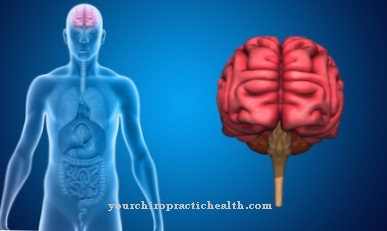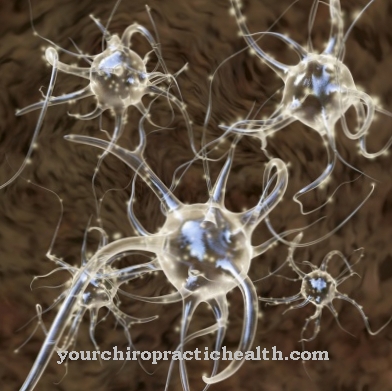"Relaxare" means relax and is also used in this meaning by the medical field. The medical term of Relaxation mostly refers to muscle relaxation. Relaxation disorders can be a life-threatening condition, especially in the heart.
What is the relaxation?

Relaxation is a loan word from Latin, where the verb "relaxare" literally means "relax". The literal translation of relaxation is "relaxation". Depending on the contact, the term can develop different individual meanings in concrete use. In the medical sub-areas of anesthesia, radiology and physiology, the term relaxation is associated with different meanings, for example.
In physiology, relaxation refers to muscles and muscular organs like the heart. Muscles are made up of individual filaments. When a muscle is contracted, i.e. when a muscle is tensed, the actin and myosin filaments of the muscles slide into each other and thereby cause the muscle to develop a certain state of tension, which results in a shortening of the muscular structure. During relaxation, on the other hand, the contractile filaments slide apart, the muscle structure elongates and the muscle relaxes.
In anesthesia, the doctor understands relaxation to mean artificial muscle relaxation, as it can be brought about by the administration of medication and is used pre- and intraoperatively. In radiology, on the other hand, the term relaxation stands for the development of magnetization in the transverse and longitudinal direction, as is the case with magnetic resonance tomography.
Function & task
The contraction and relaxation of muscles was documented in the sliding filament theory, which describes the individual processes involved in muscle fiber contraction and was laid down by Huxley and Henson in the 1950s. From a physiological point of view, muscle fibers consist of actin and myosin filaments. These contractile elements of the muscles are interlocked with one another. When the muscle contracts, the individual filament structures slide into one another. The filaments do not shorten themselves, but the contraction does shorten the muscle as a whole. The structural basis for the filaments sliding into one another is the mobility of their filament heads made of myosin.
Adenosine triphosphate attaches itself to the muscle and thus loosens the bond between the filament heads and the actin filaments. The head bends in this way and is thus able to slide along the actin filaments. Due to the accumulation of adenosine diphosphate on the muscle, the filament heads made of myosin attach themselves again to the actin filaments. The process draws the necessary energy from the breakdown of adenosine triphosphate into adenosine diphosphate and inorganic phosphates, which are catalyzed by the muscular myosin ATPases.
Muscle contraction is subject to calcium-dependent control, since individual cross-bridges can only be firmly attached to the actin filament at high calcium concentrations. The higher the concentration, the stronger the bond. The firm bond enables the bridging that allows the myosin and actin filaments to slide into one another. In this context, relaxation is achieved when the filaments slide apart again.
The alternating contraction and relaxation are vital, especially in relation to the heart muscle. As soon as part of the heart muscle no longer relaxes normally, there is a pathological relaxation disorder in the heart.
In connection with anesthesia, the term relaxation retains its physiological meaning, but in this area it usually refers to artificially induced muscle relaxation, such as can be brought about by the administration of muscle relaxants. These drugs reduce muscle tone by blocking the transmission of stimuli, acting directly in the central nervous system, or acting directly on the muscles. Directly acting muscle relaxants inhibit the influx of calcium into the myoplasm of the muscle and thus prevent contraction.
Illnesses & ailments
In diastolic relaxation disorder, part of the heart muscle does not relax normally. As a muscle, the heart pumps blood through the organism using contraction and relaxation phases, thus supplying the individual tissues and organs with important nutrients, messenger substances and oxygen. So that the heart can meet this supply, the heart muscle must alternately contract and relax again. When the heart muscle relaxes, the heart cavities fill with blood. As soon as the heart muscle contracts again, the blood moves out of the heart cavities and is pumped into the bloodstream.
In the case of a diastolic relaxation disorder of the heart, the heart cavities do not fill sufficiently with blood. As a result, when the muscle contracts, less blood is available to pass into the bloodstream. Such relaxation disorders appear particularly frequently in the context of chronic blood pressure disorders.
The relaxation disorder of the skeletal muscles, which manifests itself as muscle tension, is less dangerous, but all the more common. Muscle tension is often the result of one-sided improper strain or overload. This phenomenon can be accompanied by muscle pain, headache and many other ailments. Stress and psychological strain can also cause permanently tense and hardened muscles.
In addition to the symptoms mentioned, stomach cramps and muscle cramps can occur. Trembling and twitching of the muscles can appear accompanying symptoms. Tension in the body can also increase blood pressure and make gastric juices more acidic.
A distinction must be made between muscle tension and neurogenic spasticity, which causes increased permanent tension in the muscles. Spasticity is caused by damage to the central nervous system. The damage often manifests itself initially in flaccid paralysis, which then turns into spastic paralysis.












.jpg)



.jpg)










.jpg)
